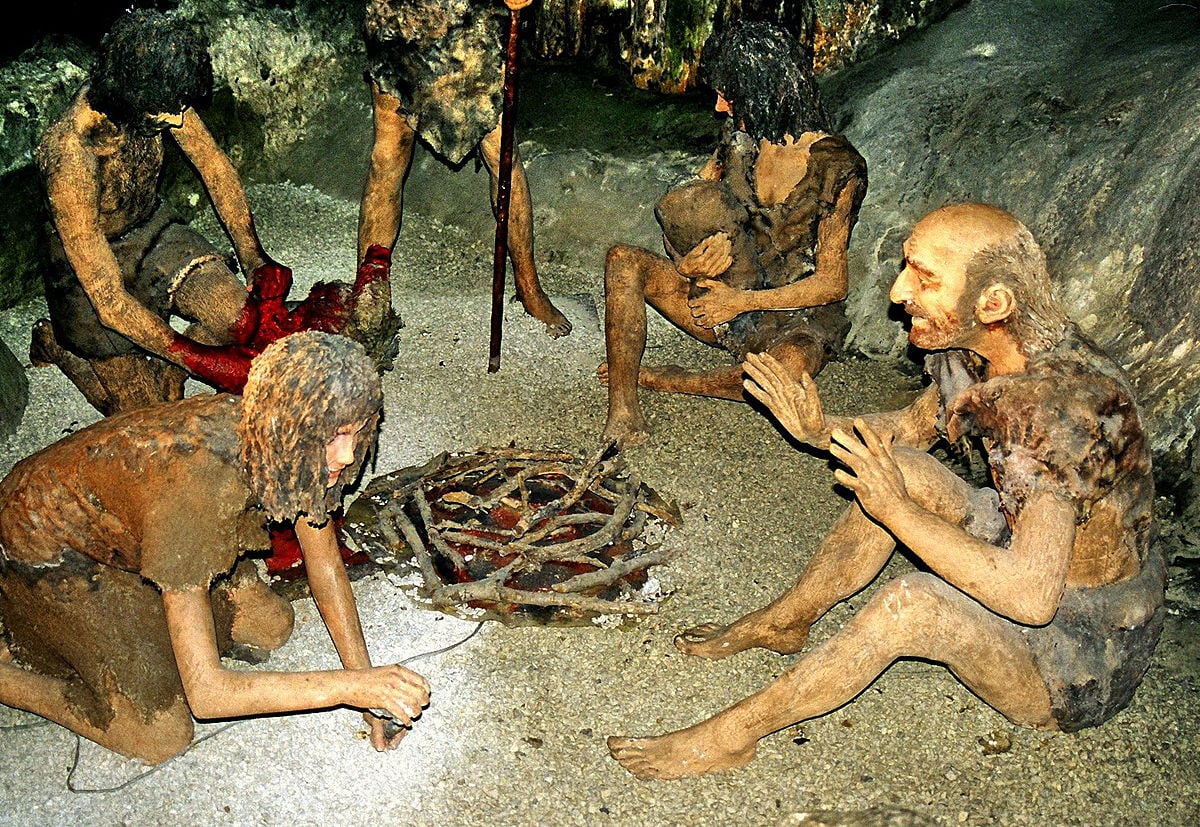
In 1868, near the French village of Les Eyzies, a geologist named Édouard Lartet made a significant discovery in a small cave. This find revealed that our modern human roots go way back in history.
The discovery happened during road construction, leading Lartet to uncover four adult skeletons and one of an infant. The remains of these ancient people who lived in Europe at the time date back to about thirty thousand years to the upper Pleistocene period, according to Discover Magazine. They were intentionally buried with animal teeth and shells crafted into necklaces and pendants. The scientists named the site Cro-Magnon 1.
Cro-Magnons, early members of the Homo sapiens species, faced significant challenges for survival. Analysis of the site indicates that the male skeleton, likely around fifty years old at the time of death, exhibited signs of bone damage, possibly due to severe fungal infection.
Examining other skeletons reveals additional challenges. Some had fused spines, suggesting they endured traumatic injuries. The adult female displayed evidence of a skull fracture prior to her death. These injuries indicate that Cro-Magnons likely cared for each other, nurturing injuries to ensure mutual survival, according to Discover Magazine.
Differences between Cro-Magnons and Neanderthals
Cro-Magnons and Neanderthals displayed certain significant differences some thirty thousand years ago. They were taller and slimmer than Neanderthals with a smaller rib cage. In some situations, Neanderthals could be almost half a foot shorter than Cro-Magnons, according to Chris Stringer, a paleoanthropologist at the London Natural History Museum.
Neanderthals, on the other hand, were shorter and more compact, with shorter arms and legs, as well. This difference is likely due to the fact that Neanderthals evolved in colder regions compared to early humans, who went through most of their evolution in Africa.
Skull shapes vary depending upon race. Though there is hardly a difference between the Euro/Nordic skull, there are clear differences between African and Aboriginal skulls.
Cro-Magnon and European skull is highly similar.
Notice, Homo Erectus' skull is similar to Afro-Ab skull pic.twitter.com/DcYU3rLqzJ— Goy Boy (@GoyBoy20) January 17, 2021
Differences in the skull further set Cro-Magnons apart from Neanderthals. For example, the braincase of Cro-Magnons was “higher and rounder” compared to Neanderthal skulls. Additionally, early human brows were notably less pronounced, if not completely absent, in contrast to Neanderthals, as reported by Discover Magazine. Examining CT scans, as Stringer points out, further reveals distinctions in the shape of ear bones between humans and Neanderthals.
Neanderthals were outcompeted
Around forty thousand years ago, Neanderthals went extinct as a species. Initially, experts believed it was because humans were smarter and equipped with better tools and weapons for survival. However, recent findings suggest this may not be entirely accurate. Neanderthals were intelligent, used advanced tools and weapons, and created art.
The more probable explanation is that, as the number of Neanderthals decreased, they faced tough competition. Cro-Magnons, with their larger population, had more opportunities to network and collaborate for survival, as reported by Discover Magazine.
See all the latest news from Greece and the world at Greekreporter.com. Contact our newsroom to report an update or send your story, photos and videos. Follow GR on Google News and subscribe here to our daily email!



